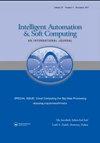实现脑电图分析改进的改革方法
IF 2
4区 计算机科学
Q2 Computer Science
引用次数: 0
摘要
发现大脑和神经学中普遍存在的几种疾病的信息绝不是一种新的科学技术。任何人的神经系统疾病都可以通过电极输出的脑电图(EEG)信号进行分析。癫痫(自发性反复发作)检测通常由医生使用脑电图产生的视觉扫描信号进行,这是繁重的,可能是不准确的。脑电图信号常用于癫痫的诊断,具有无创、便携、经济等优点,具有较强的时间韧性。本文综述了现有的伪影去除方法。提出了一种没收伪影并提取脑电图信息衍生值的新模式,实现癫痫的自动检测。癫痫自动检测必须精确地指示和检测大脑的神经异常。这种指示和检测过程需要一种熟练的方法来迅速去除脑电图信号的伪影。对脑电信号进行有效的伪影去除,可以使原始信号的有用特征得到进一步处理。一旦获得排除噪声的原始信号,为了实现信号的鲁棒分类,必须采用一种精细的策略来提取信号的特征。然后采用专家分类技术辅助自动分析过程正确区分脑电信号特征。本文章由计算机程序翻译,如有差异,请以英文原文为准。
Overhauled Approach to Effectuate the Amelioration in EEG Analysis
Discovering the information about several disorders prevailing in brain and neurology is by no means a new scientific technique. A neurological disorder of any human being can be analyzed using EEG (Electroencephalography) signal from the electrode’s output. Epilepsy (spontaneous recurrent seizure) detection is usually carried out by the physicians using a visual scanning of the signals produced by EEG, which is onerous and may be inaccurate. EEG signal is often used to determine epilepsy, for its merits, such as non-invasive, portable, and economical, can exhibit superior temporal tenacity. This paper surveys the existing artifact removal methods. It puts a new-fangled mode forward to confiscate artifacts and hauls informative derived values from EEG to automate Epilepsy detection. The automated Epilepsy detection has to precisely indicate and detect the neural abnormality of the brain. This indication and detection process necessitates a proficient approach for the prompt removal of artifacts of the EEG signals. An effective artifact removal of EEG signals can alone enable the useful features of the original signals for further processing. Once the original signals excluding the noise is obtained, a delicate strategy for extracting the features of the signals, becomes mandatory in order to accomplish robust classification of the signal. Then an expert classification technique is implemented to aid the automated analysis process to correctly distinguish the EEG signal features.
求助全文
通过发布文献求助,成功后即可免费获取论文全文。
去求助
来源期刊

Intelligent Automation and Soft Computing
工程技术-计算机:人工智能
CiteScore
3.50
自引率
10.00%
发文量
429
审稿时长
10.8 months
期刊介绍:
An International Journal seeks to provide a common forum for the dissemination of accurate results about the world of intelligent automation, artificial intelligence, computer science, control, intelligent data science, modeling and systems engineering. It is intended that the articles published in the journal will encompass both the short and the long term effects of soft computing and other related fields such as robotics, control, computer, vision, speech recognition, pattern recognition, data mining, big data, data analytics, machine intelligence, cyber security and deep learning. It further hopes it will address the existing and emerging relationships between automation, systems engineering, system of systems engineering and soft computing. The journal will publish original and survey papers on artificial intelligence, intelligent automation and computer engineering with an emphasis on current and potential applications of soft computing. It will have a broad interest in all engineering disciplines, computer science, and related technological fields such as medicine, biology operations research, technology management, agriculture and information technology.
 求助内容:
求助内容: 应助结果提醒方式:
应助结果提醒方式:


